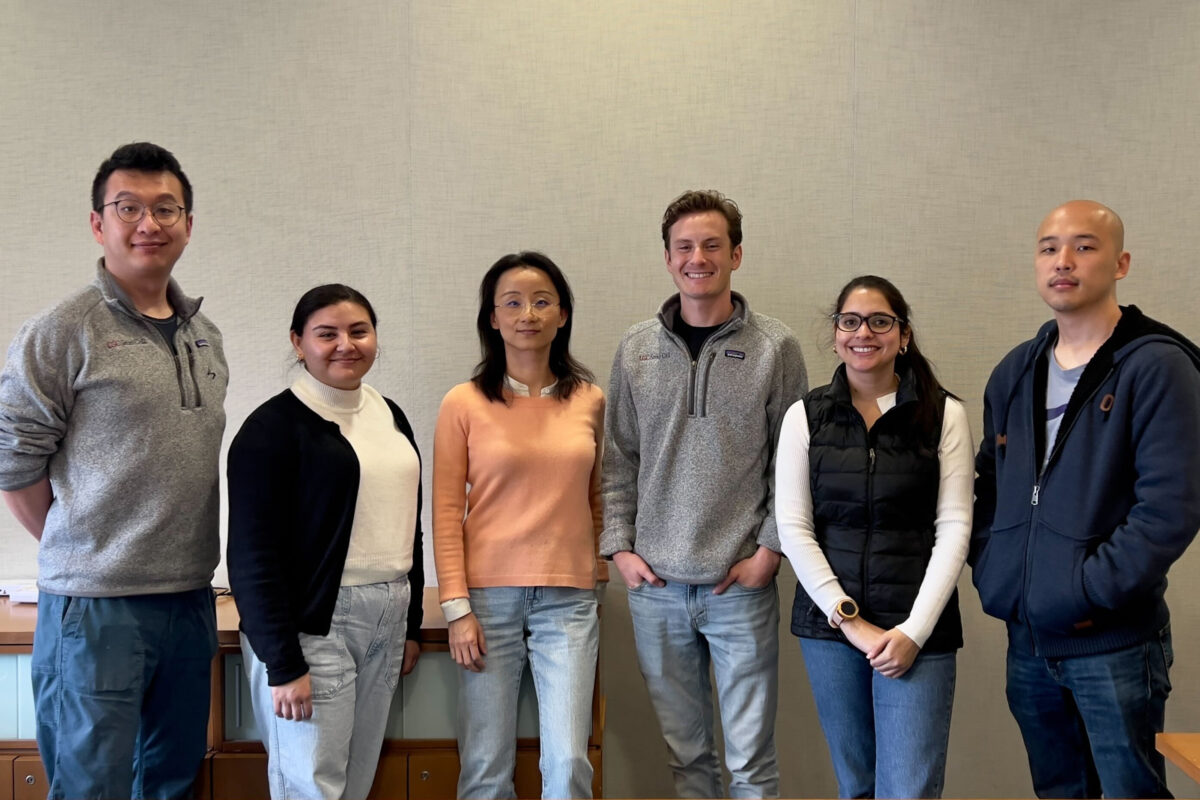
Why do some people with a genetic mutation associated with leukemia remain healthy, while others with the same mutation develop the blood cancer? In a new study published in Blood, scientists from the USC Stem Cell laboratory of Rong Lu discovered a mechanism that linked a leukemic mutation to varying potentials for disease development—a discovery which could eventually lead to a way to identify patients with the mutation who are most at risk.
To explore this paradox, first author Charles Bramlett and his colleagues labeled and tracked individual blood stem cells in mice with a mutation in a gene called TET2, which is prevalent in patients with myeloid leukemia. The scientists found that a subset of blood stem cells and their progeny—known as clones—made an outsized contribution to the overall population of blood and immune cells. The over-contributing clones tended to produce a lot of “myeloid” cells including immune cells called granulocytes, which may potentially lead to myeloid leukemia.
There were also notable differences in the gene activity of the over-contributing clones, compared to the rest of the clones. The over-contributing clones showed reduced activity in several genes known to suppress the development of leukemia and other cancers. They also showed reduced activity in genes that are involved in “RNA splicing,” the process of removing non-coding sequences from the RNA that carries messages from the DNA to the cell’s protein-making machinery.
One of these RNA splicing genes, Rbm25, showed a particularly dramatic reduction in its activity in the over-contributing clones. To explore the effect of Rbm25, the scientists used CRISPR/Cas9 gene editing to manipulate the activity of Rbm25 in cells with TET2 mutations. They found that increasing Rbm25 activity slowed the cells’ proliferation. In contrast, reducing Rbm25 activity made the cells multiply more quickly, and also caused changes in RNA splicing of the gene Bcl2l1, which regulates programmed cell death, also known as apoptosis. The natural process of apoptosis is critical for ridding the body of aberrant cells, such as pre-cancerous cells that multiply too aggressively and accumulate dangerous mutations that can lead to disease.
In accordance with these new discoveries in mice, Rbm25 activity is also negatively correlated with white blood cell counts that mark poor survival in human patients with myeloid leukemia.
“Our study suggests that a leukemia-associated genetic mutation could trigger different levels of production of myeloid cells,” said Lu, an associate professor of stem cell biology and regenerative medicine, biomedical engineering, medicine, and gerontology at USC, and a Leukemia & Lymphoma Society Scholar. “These findings could be used to better stratify which patients are at the highest risk, and also present intriguing possibilities for developing future therapies that target aberrant RNA splicing in preleukemia phases.”
Additional co-authors include Jiya Eerdeng, Du Jiang, Yeachan Lee, Ivon Garcia, Mary Vergel-Rodriguez, Patrick Condie, and Anna Nogalska from the Lu Lab.
Around 90 percent of this project was supported by federal funding from the National Heart, Lung, and Blood Institute (grants R35HL150826, R01HL138225, R01HL135292, K99/R00HL113104, 1F31HL149278-01A1) and the National Cancer Institute (grant P30CA014089). Additional support came from the California Institute for Regenerative Medicine (grants EDUC4-12756 and EDUC2-12607), the Leukemia & Lymphoma Society (grant LLS-1370-20), and a Richard N. Merkin Assistant Professorship.
